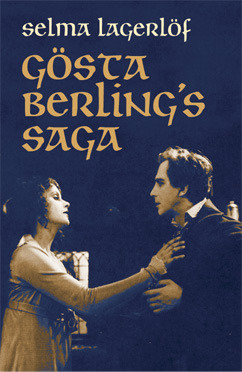It’s a little presumptuous of me to sit down and review Selma Lagerlöf’s legendary debut novel more than 100 years after the fact, but since I want to keep a fairly accurate public record of the books I read, here we are!
Like so many bookworms, I have a tendency to acquire books faster than I read them. I try to make a concerted effort to focus on my book backlog whenever I can; I have a long-standing goal every year to read a certain number of books that I’ve owned for over a year. I picked up Gösta Berling’s Saga in 2008 at the very earliest and probably 2010 at the latest, so this one definitely counts. Good ol’ Dover Thrift Editions!

Author: Selma Lagerlöf
My GoodReads rating: 4 stars
Average GoodReads rating: 3.71 stars
Language scaling: C1+
Recommended audience: Silent film buffs; people interested in Swedish literature (who can’t read the original Swedish)
In-depth thoughts: This edition is a translation from 1894 (with a few chapters being a little later, 1918); there have since been two subsequent translations, one in the 1960s and another in 2009. I don’t know if it’s entirely the age of the translations that sometimes make this a hard slog so much as the age of the work. I don’t see why anyone who can read Swedish would prefer this edition over the original, or why anyone who prefers English to Swedish would choose this one over the later translations (except for comparison’s sake). My wallet loves Dover Thrift Editions, but I don’t know if I’d recommend this one as an introduction to Lagerlöf.
Outside the language, there are other challenges: there’s a huge cast of characters and the structure is more episodic than purely narrative so chapters can feel clunky and disconnected compared to how novels are written today. (I feel like The Wonderful Adventures of Nils holds together a little better, even if it has a similar episodic structure.) Still, once you get into it, it’s still worth reading over 100 years later. Unsurprisingly for a very feminist and pro-woman, pro-women’s rights author, there are a lot of women in this large cast of characters, well developed beyond witches, damsels, and bimbos. They do some awful things, and they also do some heroic things. Of course, most of these women have a tendency to fall in love with Gösta, but then again, he’s the hero.
My personal favorite is the ostensible antagonist, Fru Samzelius. While she spends much of the book outcast from her farm and home, pitted against the cavaliers, she begins and ends the story with competence and dignity, and always does things on her own terms.
Doktor Glas, from around the same time period, has seen a modern re-imagining from the perspective of the antagonist, Reverend Gregorious. I want someone to do the same for Margarita Samzelius. She deserves her own book even more than Reverend Gregorious does.

Something like this just seems ripe for the miniseries pickings, to be honest. The episodic chapters would work just fine as standalone episodes, so the scripts would basically write themselves. Come on, Netflix!

One thought on “Review: Gösta Berling’s Saga”